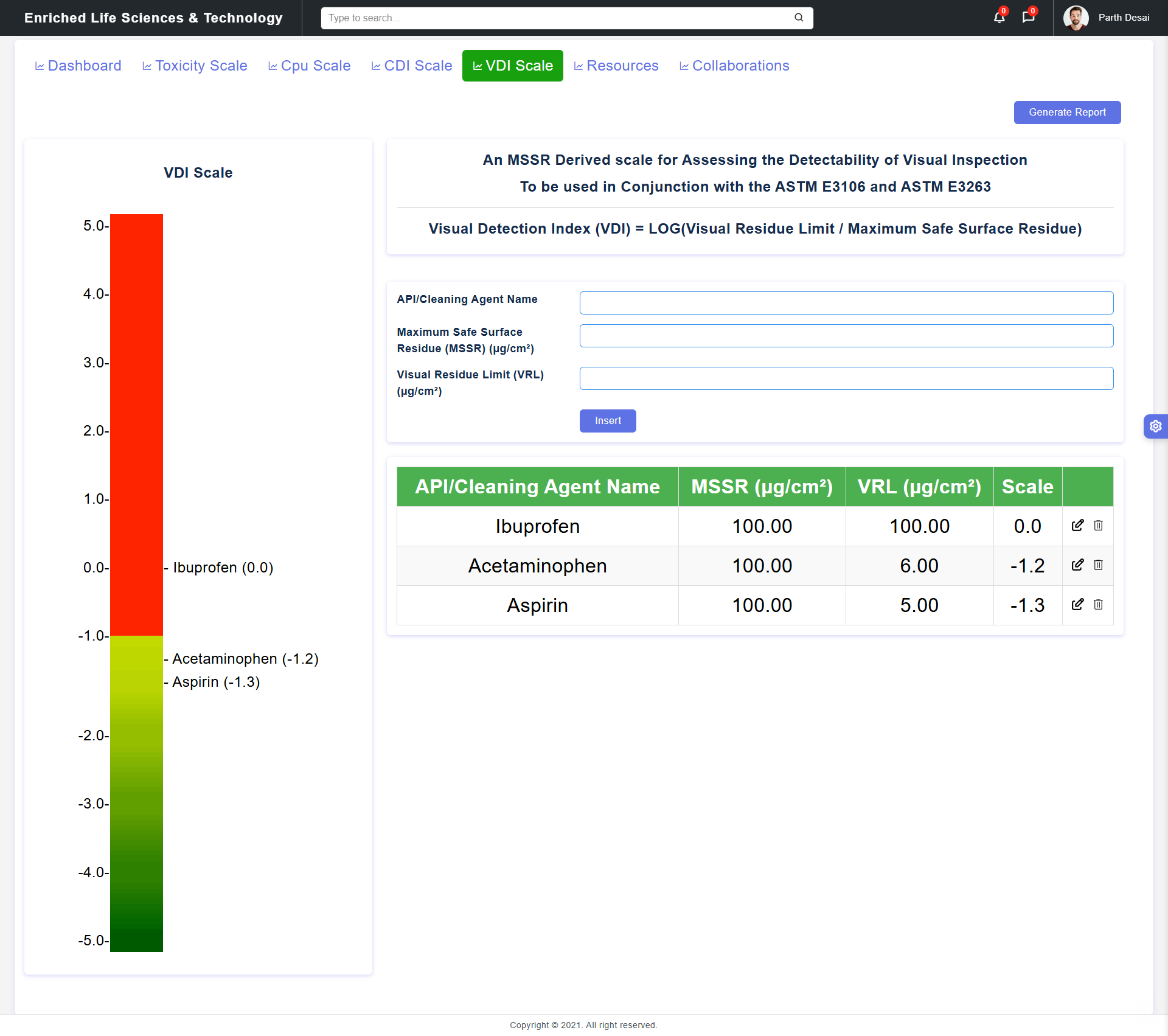Detectability Scale (Visual Inspection) Tool

This Visual Residue Limit (VRL) Derived Detectability (Visual Inspection) Scale Tool is developed to apply scientific and risk-based approaches to cleaning validation outlined in ASTM E3106 – “Standard Guide for Science-based and Risk-based Cleaning Process Development and Validation”. The Visual Residue Limit (VRL) Derived Detectability (TOC) Scale provides a framework to evaluate the suitability of Visual Inspection (VI) for detecting the compound carryover in shared facilities. The framework emphasizes the principles of ICH Q9 for quality risk management, offering a more robust and transparent alternative to traditional risk priority number (RPN) methods used in failure modes and effects analyses (FMEAs). The Visual Residue Limit (VRL) Derived Detectability Scale assess whether VI can reliably detect residue levels relative to established Maximum Safe Surface Residue (MSSR) level based on health-based exposure limits (HBEL). The Visual Residue Limit (VRL) Derived Detectability Score is calculated by applying a logarithmic ratio of VRL and MSSR. The detectability scale (Visual Inspection) complements toxicity and process capability scales to provide a holistic risk assessment framework. These tools collectively assess cleaning risks based on severity (toxicity scale), probability (process capability scale), and detectability (VI detectability scale). The Visual Residue Limit (VRL) Derived Detectability Scale Tool allows users to enter the necessary information and then calculate the detectability score and create visual comparison of Visual Detection Index (VDI). The tool also allow user to generate the report incorporating visuals and table which can then be added to the cleaning risk assessment report.